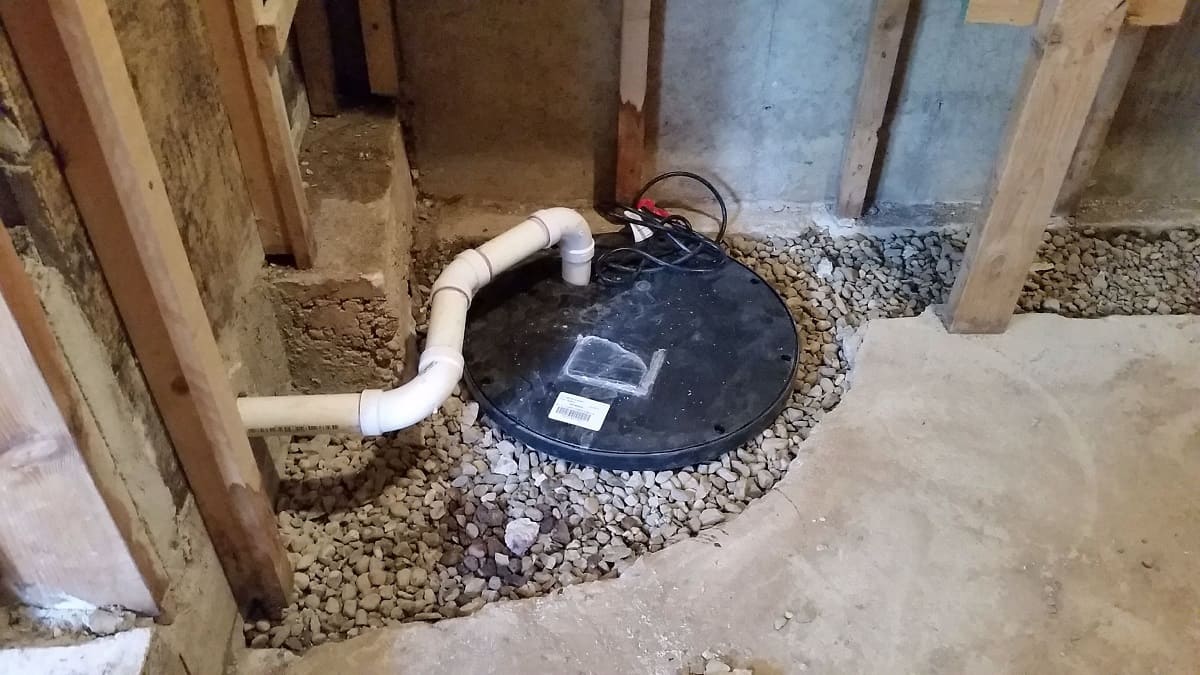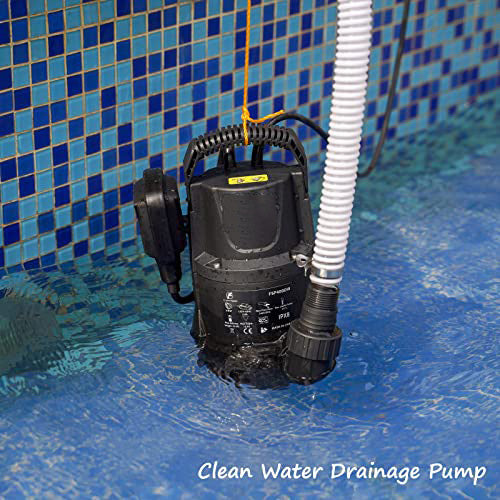Our Definitive Guide to Servicing a Sump Pump
Our Definitive Guide to Servicing a Sump Pump
Blog Article
The publisher is making a number of great pointers relating to How to Care for Your Sump Pump overall in this great article following next.

Sump pumps are critical parts in lots of homes, particularly in areas vulnerable to flooding or excessive wetness. They aid avoid water damage by successfully eliminating excess water from basements or crawl spaces. Nevertheless, like any other device, sump pumps call for normal maintenance to ensure they function properly when needed one of the most. Cleaning your sump pump is an essential part of its maintenance, and comprehending how to do it properly can conserve you from costly fixings and potential catastrophes.
Introduction
Keeping a tidy sump pump is important for its correct performance and long life. Overlooking this crucial task can lead to blockages, breakdowns, and inevitably, water damages to your residential property. For that reason, learning how to clean a sump pump is crucial for homeowners who rely upon these tools to maintain their basements dry and secured.
Signs of a Dirty Sump Pump
Understanding when your sump pump requires cleansing is critical for protecting against prospective malfunctions. Some typical indicators that show a dirty sump pump consist of unusual noises during procedure, reduced water flow, and noticeable particles in the pit. If you observe any of these signs, it's important to clean your sump pump immediately to prevent any more issues.
Planning for Cleansing
Prior to you start cleaning your sump pump, it's necessary to take some safety precautions. Beginning by shutting off the power to the pump to avoid any electrical crashes. Furthermore, wear ideal protective gear, such as gloves and goggles, to secure on your own from dust, particles, and potential pathogens.
Comprehending the Sump Pump
Before diving into the cleaning procedure, it's necessary to have a fundamental understanding of exactly how a sump pump works. Typically installed in a pit or container below the basement floor, a sump pump includes a number of crucial components, including a pump, a float switch, and a discharge pipe. When water collects in the pit, the float switch triggers the pump, which then pumps the water out through the discharge pipe, away from the structure's structure.
Step-by-step Overview to Cleaning Up a Sump Pump
Shutting Off the Power
Begin by disconnecting the power supply to the sump pump to prevent any accidents while cleansing.
Checking for Correct Functioning
Prior to reinstalling the pump, execute a fast examination to make sure that the float switch triggers the pump correctly. Put some water right into the sump pit and observe the pump's operation. If every little thing is working appropriately, you can rebuild the pump and reconnect the power supply.
Removing Particles and Dust
Make use of a pail or a scoop to eliminate any visible debris, dirt, or sediment from the sump pit. Dispose of the debris correctly to avoid it from blocking the pump or the discharge pipe.
Cleansing the Pump and Float Switch
As soon as the pit is free from debris, carefully remove the pump from the pit. Evaluate the pump and the float button for any indications of damage or wear. Make use of a soft brush or towel to clean the surface areas and eliminate any kind of collected grime.
Flushing the System
After cleaning up the pump and float switch, flush the sump pit with clean water to eliminate any kind of remaining dirt or debris. This will certainly aid ensure that the pump runs efficiently and effectively.
Maintenance Tips to Maintain Your Sump Pump Clean
Along with regular cleaning, there are numerous maintenance suggestions you can comply with to keep your sump pump in optimum problem:
Verdict
Cleansing your sump pump is a vital facet of its upkeep and makes sure that it operates efficiently when you need it one of the most. By adhering to the steps outlined in this overview and integrating regular upkeep into your routine, you can expand the life-span of your sump pump and shield your home from water damages.
6 STEPS ON HOW TO CLEAN A SUMP PUMP PROPERLY
UNDERSTANDING SUMP PUMPS
Your sump pump plays a crucial role in protecting your home by managing and removing excess water. It primarily functions as a “shield”, guarding your basement against the damaging effects of water accumulation. The pump is housed in a sump pit in the lowest part of your basement, and its job is to pump out any water that collects there.
During heavy rainfalls or when snow melts rapidly, water can infiltrate your basement, posing potential risks like flooding, structural damage, and harmful mold growth. Here, the sump pump springs into action, pumping out the intruding water and directing it away from your home.
SAFETY FIRST
Before cleaning, remember to prioritize safety. Disconnect the sump pump from the power source to prevent any accidental electric shocks. Also, wear sturdy gloves to protect your hands from any sharp or dirty components within the pump.
REMOVE THE SUMP PUMP
After ensuring your safety, the next step is to remove the sump pump from its pit. Doing this might require careful maneuvering as you don’t want to damage any pump components. Once removed, clean the sump pit to remove any accumulated debris or sludge.
INSPECT THE PUMP
Inspect the pump for any visible signs of wear or damage. Check the power cord, float switch, and impeller housing. If any components look worn out or damaged, consider replacing them to ensure optimal performance.
CLEAN THE PUMP
Thoroughly clean the pump with warm, soapy water. Make sure to rid it of any dirt, gravel, or other debris that might impede its performance. You can use a toothbrush to clean the small, hard-to-reach parts of the pump.
REINSTALL THE SUMP PUMP
Reinstall the pump into the sump pit Make sure it’s positioned correctly to remove the water effectively Once it’s back in place, reconnect it to the power source TEST THE PUMP
Finally, pour some water into the pit to ensure the pump works correctly. It should start automatically and begin pumping out the water; if it doesn’t, check the power source and the positioning of the pump.
Remember, while cleaning your sump pump is an essential part of home maintenance, hiring a professional plumber for a thorough inspection and cleaning at least once a year is also important. This will ensure that your pump is in optimal condition, ready to protect your home from potential water damage.
BEST PRACTICES FOR CLEANING SUMP PUMP DISCHARGE PIPES
Regular Inspection: Regularly inspect your discharge pipes, especially during heavy rainfall or snowmelt periods. Look for any signs of blockage or damage. Early detection of problems can prevent serious issues down the line. Periodic Cleaning: Over time, sediment and debris can accumulate in the discharge pipes, impeding the flow of water. Regular cleaning helps keep the pipes clear and functioning efficiently. You can use a high-pressure water jet to effectively clean the pipes. Insulation During Winter: In colder climates, discharge pipes can freeze, blocking the outflow of water. Protect your discharge pipes from freezing temperatures by insulating them with foam pipe insulation. This will ensure the sump pump can continue to discharge water even in freezing conditions. Proper Positioning: The discharge pipe should be positioned to direct water away from your home’s foundation. Improper positioning can lead to water seeping back into the basement. Ensure the pipe is long enough and angled correctly. Installation of a Check Valve: A check valve prevents water from flowing back into your sump pit after the pump has pushed it out. Installing a check valve helps maintain the efficiency of your sump pump and reduces the risk of flooding. Minimize Pipe Turns: Every curve or turn in the discharge pipe can decrease the efficiency of water flow. By minimizing turns and bends in your discharge pipe, you can increase the efficiency of your sump pump. https://www.fullspeedplumbing.com/how-to-clean-a-sump-pump-properly9999/

Do you like reading up on ? Create a remark down the page. We'd be pleased to know your reactions about this write up. We are looking forward that you visit us again later on. Sharing is caring. One never knows, you may very well be helping someone out. I praise you for your time. Return soon.
Get Quote Now Report this page